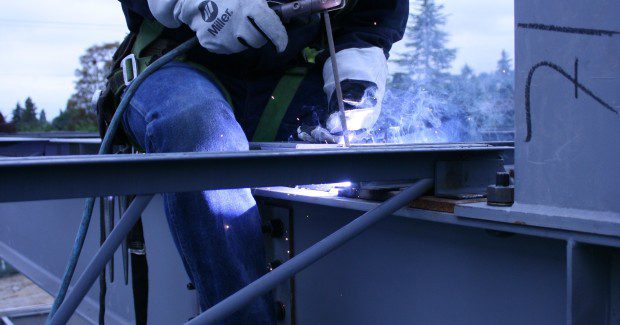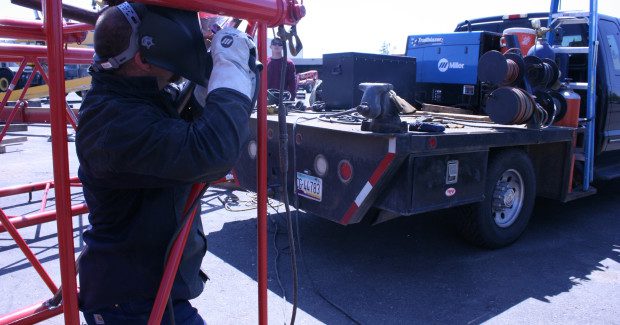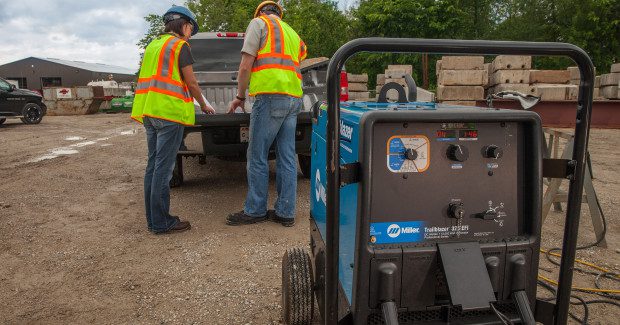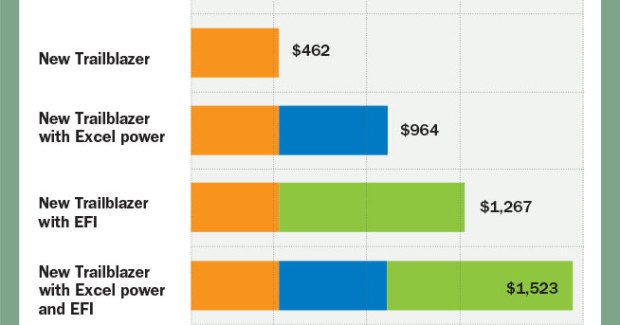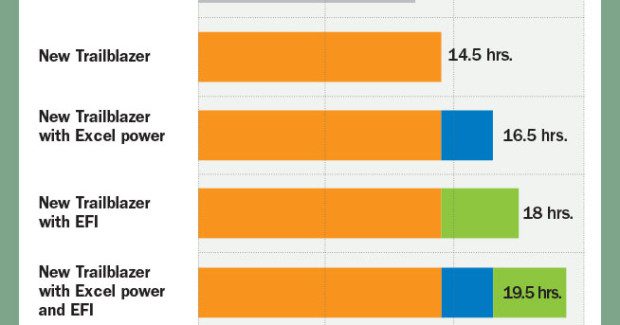Next Generation Speed Governing Technology
Numerous benefits can be gained from improved fuel efficiency and reduced noise when using new welder/generators with speed-regulating technology.
Posted: December 22, 2014
With most gasoline and variable-speed diesel engine-driven welder/generators, idle and high are the only options when it comes to engine speed. Unlike larger low speed diesel machines that operate at a top run speed of 1,800 rpm, the machines in this engine category will run in idle when there is no load applied to the engine and kick up to a full speed of 3,600 rpm when any load is applied, no matter how much power is actually needed.
Since any weld load causes typical welder/generators of this type to run continuously at full speed, they consume more fuel than necessary. This also causes them to generate more noise than needed. Improving fuel efficiency and reducing noise are two of the most frequent operator requests regarding most engine-driven welder/generators.
Technology advancements are making that possible. One new technology, Auto-Speed™, is standard on all Trailblazer® engine-driven welder/generators. It provides significant improvements in fuel efficiency while noticeably reducing noise levels by automatically selecting the appropriate engine speed to match the needed weld load requirement. Using this technology, the machine automatically ramps up when more weld load is needed for an application, but runs at a lower speed whenever possible for the job. The result is simple: Welding operators get all the power needed to weld while consuming the minimal amount of fuel and generating the lowest level of noise to do so.
HOW IT WORKS
The technology is a power management system built into the welder/generator. It senses the weld load need of each application and sends a command signal to the engine to match the engine’s rpm to the load requirement. The control chooses from four available speeds — 2,400 rpm (idle), 2,800 rpm, 3,200 rpm and 3,600 rpm (high). The system automatically selects the most appropriate speed based on the weld load requirement. This design delivers sufficient load to weld, while also offering fuel savings and noise reduction.
The control works in different ways depending on the welding process being used and the output required. When using a Stick or TIG welding process, the control predetermines engine speed based on the operator’s preset amperage setting. If the welding operator presets 125 amps, the technology knows the load requirement and will adjust rpm accordingly.
To compensate for Stick and TIG arc starts, which require more load, the control adjusts rpm to one speed higher than the preset amperage and then lowers the engine speed after arc initiation. This allows welding operators to get premium arc starts while using only the fuel required to run the preset amperage. If long arcing occurs, the control will increase engine speed.
When a welding operator is using a MIG process, the engine automatically goes to a speed that gives enough load to start any wire size. Once the arc is initiated, the control mechanism calculates the load required and corrects engine speed. For higher amperage welds, when more power is needed, the engine will continue to increase in speed, whereas it will decrease for welds that demand less amperage.
To keep the engine from constantly changing speeds based on weld load requirements, the technology monitors and calculates load needs, to limit the number of times the engine will go up and down based on those needs. This helps avoid having an engine speed that is constantly changing, but ensures operators get all the power necessary for the job.
CONTROL OF AUXILIARY POWER
In addition to the speed-regulating technology, another exclusive technology allows users to run most jobsite tools at 2,400 rpm to save fuel and reduce noise. This technology — Excel™ power — is optional in the electronic fuel injection (EFI) model. With Excel, welding operators get 2,400 watts of pure 120 volt, 60 Hz generator power, completely separate from the machine’s standard generator power. This allows operators to run tools and low-amperage welding arcs simultaneously at idle speed.
WHAT SPEED REGULATION MEANS FOR FUEL EFFICIENCY
Many jobsite applications can be completed at power levels lower than those allowed by typical welder/generators in this category. For example, a common application on jobsites is welding a 1/8 in 7018 stick electrode. With speed-governing technology, welding operators can complete this type of welding all day and never have the machine come out of idle.
Any Stick, TIG or MIG welding application that runs at 150 amps or lower can be completed at idle, or 2,400 rpm. Welding processes that use 150 amps to 200 amps have a 2,800 rpm continuous load with this technology, while welding applications that need 200 amps to 250 amps require a 3,200 continuous load. Amperage requirements above 250 amps run at 3,600 rpm. (These are all approximate thresholds for rpm changes.)
When jobs are completed using a lower engine speed, the result for welding operators is greater fuel efficiency. A machine with speed-regulating technology can save about $460 per year in fuel costs when compared to a machine without it, according to field testing. Additional fuel savings can be realized when speed-governing technology is combined with other optional technologies that make welder/generators more efficient.
Greater fuel efficiency also equates to longer runtimes for welding operators on the job, which can help increase productivity. Less time spent on refueling means more time doing other value-added activities. Runtimes can increase by 90 minutes on a 12 gal tank with the speed-governing technology, according to field testing.
REDUCED NOISE CAN IMPROVE SAFETY, PRODUCTIVITY AND COMFORT
Another benefit that welding operators will notice is quieter operation, since a machine that spends more time at lower speeds produces less noise. It would take 12 gas-powered, high-speed welder/generators with the speed-regulating technology running simultaneously to equal the noise generated by one gas-powered machine (from within the same engine category) that does not use the technology.
Reduced noise levels can help improve safety and communication between workers on the job, giving workers the ability to better hear what’s happening around them. Less noise also means a more comfortable environment for the welding operator and anyone else working in the vicinity of the machine.
Quieter operation means the welder/generator often can be used earlier and later, especially on jobsites in noise-sensitive areas, such as residential neighborhoods or near hospitals. This can make completing jobs a faster process, which helps contractors boost productivity and become more competitive in bidding. It’s also easier for welding operators to hear the arc when the machine produces less noise. Some operators use sound as a way to monitor weld quality, so this is another benefit that can result in productivity gains.
PAYBACK OVER TIME
Cost considerations are important to many businesses, contractors and welding operators when choosing a welder/generator. Technology advancements that offer efficiency and productivity benefits may have a higher up-front cost, but those benefits can offer greater payback over the life of the machine. In addition to potential fuel savings and productivity gains, the ability to spend more time under the hood or powering tools — and less time running to get fuel — can make a difference in how quickly a project or job is completed.
REALIZING THE BENEFITS
Welder/generators are valuable and versatile machines used on construction jobsites and work trucks; in fabrication shops; for service, maintenance and repair work; and throughout the oil & gas industry, just to name a few applications. The bottom line: Welding operators can get numerous benefits from improved fuel efficiency and reduced noise when using the new generation of welder/generators with speed-regulating technology.
Note: The speed-regulating technology discussed in this article applies to gasoline and variable-speed diesel engine-driven welder/generators. A full line of low-speed diesel engine-drives are also available that operate at a top run speed of 1,800 rpm, which reduces noise and contributes to significant fuel savings.



